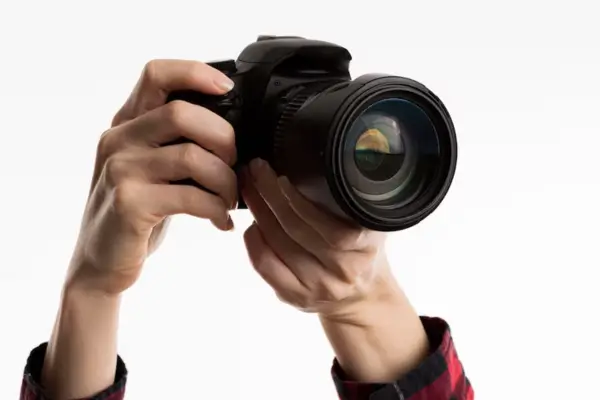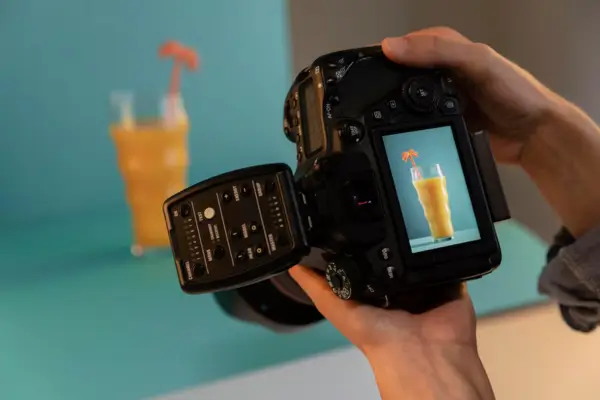For photographers and videographers, a reliable battery is just as crucial as a high-quality lens or a sturdy tripod. Whether you’re capturing breathtaking landscapes, filming an important event, or working on a professional shoot, the last thing you want is for your camera to power down at a critical moment.
Short battery life is a common frustration among camera users, especially when shooting in extreme conditions, using power-hungry settings, or relying on wireless connectivity features. Frequent battery drain can disrupt your workflow, force you to carry multiple spare batteries, or even lead to missed shots.
In this article, we’ll explore practical and effective strategies to extend your camera’s battery life. From adjusting camera settings to proper battery maintenance and external power solutions, these tips will help you get the most out of every charge, ensuring you never miss a moment.

Optimize Camera Settings
One of the easiest ways to extend your camera’s battery life is by optimizing its settings. Many default settings consume extra power, but with a few adjustments, you can significantly improve battery efficiency.
Reduce LCD Brightness
The LCD screen is one of the biggest power drains on a camera. Lowering its brightness can help conserve energy, especially when shooting outdoors where a bright screen isn’t always necessary. Check your camera’s menu for brightness settings and reduce it to a comfortable but efficient level.
Use the Viewfinder Instead of the LCD Screen
Whenever possible, use the optical or electronic viewfinder instead of the LCD screen to frame your shots. LCD screens require constant power, while viewfinders, particularly optical ones, use far less energy. If your camera has an eye sensor that automatically turns off the LCD when using the viewfinder, make sure it is enabled.
Turn Off Image Stabilization When Not Needed
Image stabilization (IS) is a great feature for reducing blur, but it also consumes battery power. When shooting with a tripod or in well-lit conditions where stabilization isn’t necessary, turn it off to extend battery life. You can usually find this option in your camera’s menu or on the lens itself.
Disable Unnecessary Features (Wi-Fi, Bluetooth, GPS)
Modern cameras come equipped with wireless connectivity features like Wi-Fi, Bluetooth, and GPS, which are useful for transferring photos and geotagging. However, these features continuously draw power, even when idle. If you don’t need them during your shoot, disable them through your camera’s settings to preserve battery life.
By making these small but effective adjustments, you can significantly extend your camera’s battery life and ensure that it lasts longer during your shooting sessions.
Manage Power Usage Efficiently
Maximizing your camera’s battery life requires smart power management. By making a few simple adjustments to how you use your camera, you can significantly extend its runtime and avoid running out of power at crucial moments.
Use Sleep Mode or Auto Power-Off Settings
Most modern cameras have a sleep mode or auto power-off function that helps conserve energy when the device is idle. Adjust these settings to ensure your camera automatically powers down after a short period of inactivity. This way, if you get distracted or take a break, your battery won’t drain unnecessarily.
Avoid Reviewing Photos and Videos Excessively
It’s tempting to check every shot immediately, but constantly reviewing images and videos on the LCD screen consumes a lot of power. Instead, trust your settings and composition skills, and limit how often you check your shots. If you need to review them, try using the viewfinder or a lower brightness setting to minimize battery drain.
Limit Autofocus Usage
Autofocus can be a major battery drain, especially in low-light conditions where the camera continuously hunts for focus. To save power, switch to manual focus when possible, particularly for still subjects or tripod shots. If you rely on autofocus, use single-shot AF instead of continuous AF to reduce unnecessary power consumption.
By implementing these power-saving habits, you can extend your camera’s battery life and ensure you’re always ready to capture the perfect shot.
Choose the Right Battery and Accessories
Selecting the right battery and accessories is essential for maximizing your camera’s battery life and ensuring uninterrupted shooting sessions. Here are some key considerations:
Use Official or High-Quality Third-Party Batteries
While it may be tempting to purchase cheaper, off-brand batteries, they often lack the efficiency and reliability of official or well-reviewed third-party options. Original manufacturer batteries are specifically designed for your camera model, ensuring optimal performance and safety. If you opt for third-party batteries, choose reputable brands with positive user reviews to avoid risks such as overheating, poor battery life, or incompatibility.
Keep Spare Batteries Fully Charged
Carrying extra batteries is one of the easiest ways to extend your shooting time. Make it a habit to charge all your batteries before heading out for a shoot. If possible, label them and rotate their usage to maintain longevity. Additionally, store spare batteries in a cool, dry place to prevent premature degradation. For outdoor or travel photography, consider using battery cases to keep them safe and organized.
Invest in a Battery Grip for Extended Power
A battery grip is a valuable accessory for photographers who need extended battery life without constantly swapping batteries. These grips allow you to use two batteries simultaneously, effectively doubling your camera’s power supply. They also provide better ergonomics, especially for portrait-oriented shots, making them a great investment for professionals and enthusiasts alike.
By choosing the right batteries and accessories, you can significantly improve your camera’s battery performance and avoid disruptions while capturing important moments.

Proper Battery Maintenance and Storage
Taking care of your camera battery properly can significantly extend its lifespan and ensure consistent performance. Here are some essential maintenance and storage tips to keep your battery in top condition.
Store Batteries in a Cool, Dry Place
Batteries are sensitive to temperature and humidity. To preserve their longevity, store them in a cool, dry environment away from direct sunlight or heat sources. High temperatures can cause batteries to degrade faster, while excessive moisture can lead to corrosion or damage. A drawer or camera bag with good ventilation is an ideal storage option.
Avoid Extreme Temperatures (Hot or Cold)
Extreme temperatures can negatively impact battery efficiency. Cold conditions, especially in winter or high-altitude locations, can cause batteries to drain much faster. On the other hand, excessive heat can lead to overheating, reducing the battery’s lifespan. If shooting in cold weather, keep spare batteries in an inner pocket close to your body to maintain warmth. In hot environments, avoid leaving batteries in direct sunlight or inside a hot car.
Keep Battery Contacts Clean
Dirty or corroded battery contacts can reduce the efficiency of power transfer between the battery and the camera. To prevent this, regularly check the battery terminals and clean them with a dry microfiber cloth or a cotton swab with a small amount of rubbing alcohol if needed. Keeping the contacts clean ensures a stable connection and prevents power issues while shooting.
By following these maintenance and storage tips, you can maximize your camera battery’s lifespan and performance, ensuring you never miss the perfect shot due to power issues.
Use External Power Sources When Possible
One of the best ways to extend your camera’s battery life, especially during long shoots, is to use external power sources. This ensures that you won’t run out of battery at critical moments. Here are some effective options:
Carry a Portable Power Bank
A portable power bank is a great investment for photographers who spend long hours shooting outdoors. Many modern cameras can be charged via USB, allowing you to recharge on the go. When choosing a power bank, make sure it has a high capacity (measured in mAh) and is compatible with your camera model.
Use AC Adapters for Studio Work
If you’re working in a controlled environment like a studio, an AC adapter is a reliable solution. By connecting your camera directly to a power source, you eliminate the need for battery swaps and ensure uninterrupted shooting. This is particularly useful for time-lapse photography, product shoots, and live streaming sessions.
Consider a Solar Charger for Outdoor Photography
For adventure and travel photographers who often shoot in remote locations, a solar charger can be a game-changer. These chargers allow you to harness solar energy to recharge your camera batteries. While they may not be as fast as traditional charging methods, they provide an eco-friendly and sustainable option when access to electricity is limited.
By incorporating these external power solutions, you can keep your camera running longer and focus on capturing the perfect shot without worrying about battery life.

Shooting Techniques to Conserve Battery
Maximizing your camera’s battery life isn’t just about settings and accessories—it also depends on how you shoot. By adopting smart shooting techniques, you can significantly reduce power consumption and extend your shooting sessions. Here are some effective ways to conserve battery while capturing great shots.
Plan Shots to Minimize Unnecessary Power Usage
Instead of taking random photos and deleting them later, plan your shots in advance. Consider the composition, lighting, and angles before turning on the camera. This reduces the time your camera stays powered on unnecessarily, helping to preserve battery life.
Avoid Excessive Burst Mode Shooting
While burst mode is great for capturing fast-moving subjects, it can drain your battery quickly. Shooting in continuous mode forces the camera to process multiple images rapidly, increasing power consumption. Use burst mode only when necessary and switch back to single-shot mode to save energy.
Use Manual Focus Instead of Autofocus When Possible
Autofocus systems continuously adjust the lens to maintain sharpness, consuming extra battery power. If you’re shooting static subjects, consider using manual focus to reduce the workload on your camera’s battery. This is especially useful in low-light conditions where autofocus struggles and drains more power.
By implementing these techniques, you can capture high-quality images while conserving battery life, ensuring you don’t miss important shots due to a drained battery.
Conclusion
Maximizing your camera’s battery life is essential for uninterrupted shooting sessions, whether you’re capturing stunning landscapes, filming a vlog, or covering an event. By optimizing your camera settings, managing power efficiently, using high-quality batteries, maintaining proper storage habits, and considering external power sources, you can significantly extend the time between charges.
Implementing these simple yet effective strategies will not only enhance your photography experience but also ensure that you never miss an important shot due to a drained battery. Start applying these tips today and notice the difference in your camera’s performance!
Do you have your own tricks for saving battery life? Share them in the comments below—we’d love to hear from you! 🚀📸
